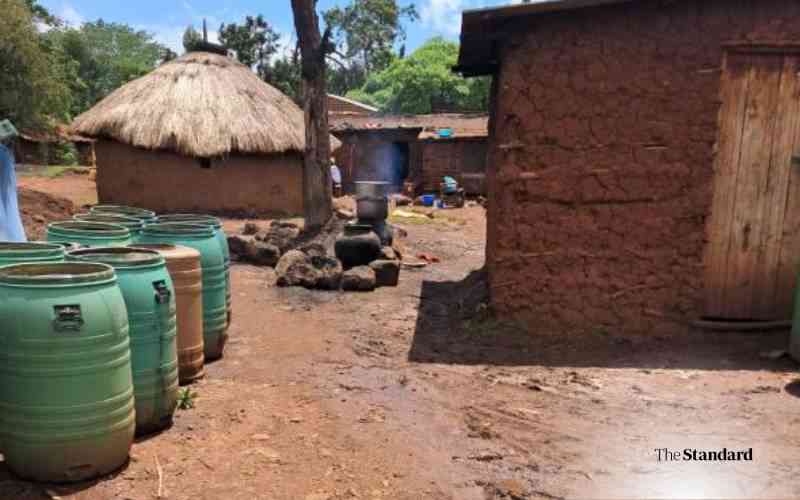
When Mr Waswa heard I was in the village for the weekend recently, he quickly hopped onto his bicycle to come and say hi. In the village, such greetings are loaded with many other requests.
There is a general belief that those dwelling in urban areas are more informed and well off financially, so folks in the village always expect us to have solutions to any problem back there. Mr Waswa, a former sugarcane farmer is now a dairy farmer so I had a rough idea of how our meeting would go.
As it turned out, Waswa had attended many trainings on animal husbandry only that there were a few things he wasn’t sure about and needed my input. So I agreed to accompany him back to his farm for a clear picture of the situation.
After a quick inspection of his dairy unit, I lauded him for his efforts given the challenges in the village. Waswa’s heifer was being milked and that opened our discussion.
How much do you get per milking? I ask.
Waswa told me the heifer produced 10 litres in the morning and another 8 in the evening after delivery but this production had dipped with time.
A look at the records confirmed Waswa’s concern. The cow started off well, it produced around 20 litres a day, still above average for a Friesian cross and for a farmer just starting off. But this has since dipped way below the lower limit.
“Did you lower the feeds or change its diet?” I ask further.
“No. In fact I have increased the concentrates to see if that can take back our milk production to its earlier level,” he replies.
I ask for health records and they too are good, nothing to warrant such a reduction. That leaves me with an examination of the animal. I walk to the dairy unit and find the heifer eating nappier mixed with desmodium. I guess the nutrition is fine; I massage the cow around the muzzle to judge its temperament. It is a humble cow; it confirms that by gently licking my palm.
“Does she kick when you milk?” I ask.
“She used to be gentle but nowadays she kicks a lot,” Waswa says.
A closer look at its teats, I noticed a few flies hovering around and a crack here and there in some teats. I tried to touch the udder and the initially friendly animal kicks probably due to an anticipated pain.
Wounds
Stay informed. Subscribe to our newsletter
Teat wounds will certainly reduce milk production and this was all that was bothering Waswa’s heifer. Teat wounds result from physical injuries, fly bites or faulty milking machines. In most instances where the animals are hand milked, milking technique is a major cause.
I confirmed that when I asked Waswa to demonstrate how he milks the cow. Even with the application of milking salve, milking technique can still cause teat injuries and negatively affect milk production.
Milking slaves indeed make milking hygienic and smooth but if the person milking is pulling rather than gently squeezing the teats, wounds will form.
Wounds are painful and instead of stimulating the release of oxytocin which is the milk letdown hormone, they stimulate release of adrenalin which counters oxytocin and hence reducing milk let down.
A wound in one teat or udder is enough to make the cow “lock away” the milk. In such cases, if the calf is allowed to suckle afterwards although it is advisable to bucket feed the them, they may end up with excess milk which is also not healthy. I treated the wounds and advised on a change in milking technique and the problem was fixed.
Hand milking
Use the squeezing technique to empty the udder. If stripping is applied, it increases the somatic cell count in the milk besides weakening the teat’s sphincter muscles and irritating the milk canal increasing chances of pathogenic infections.
When squeezing, start with teats in the rear quarters since they give about two-thirds of the total milk per session. The udder should always be emptied completely otherwise subsequent milk production may decline.
Weigh and record the yield before sieving the milk into a holding can for transportation or cooling.
Apply milking jelly on teats and or immerse them into a teat dip and release the animal.
Dr. Othieno was the Vet of the Year 2016 and works with the Kenya Tsetse and Trypanosomiasis Eradication Council – KENTTEC, jothieno43@yahoo.com
 The Standard Group Plc is a
multi-media organization with investments in media platforms spanning newspaper
print operations, television, radio broadcasting, digital and online services. The
Standard Group is recognized as a leading multi-media house in Kenya with a key
influence in matters of national and international interest.
The Standard Group Plc is a
multi-media organization with investments in media platforms spanning newspaper
print operations, television, radio broadcasting, digital and online services. The
Standard Group is recognized as a leading multi-media house in Kenya with a key
influence in matters of national and international interest.
 The Standard Group Plc is a
multi-media organization with investments in media platforms spanning newspaper
print operations, television, radio broadcasting, digital and online services. The
Standard Group is recognized as a leading multi-media house in Kenya with a key
influence in matters of national and international interest.
The Standard Group Plc is a
multi-media organization with investments in media platforms spanning newspaper
print operations, television, radio broadcasting, digital and online services. The
Standard Group is recognized as a leading multi-media house in Kenya with a key
influence in matters of national and international interest.






